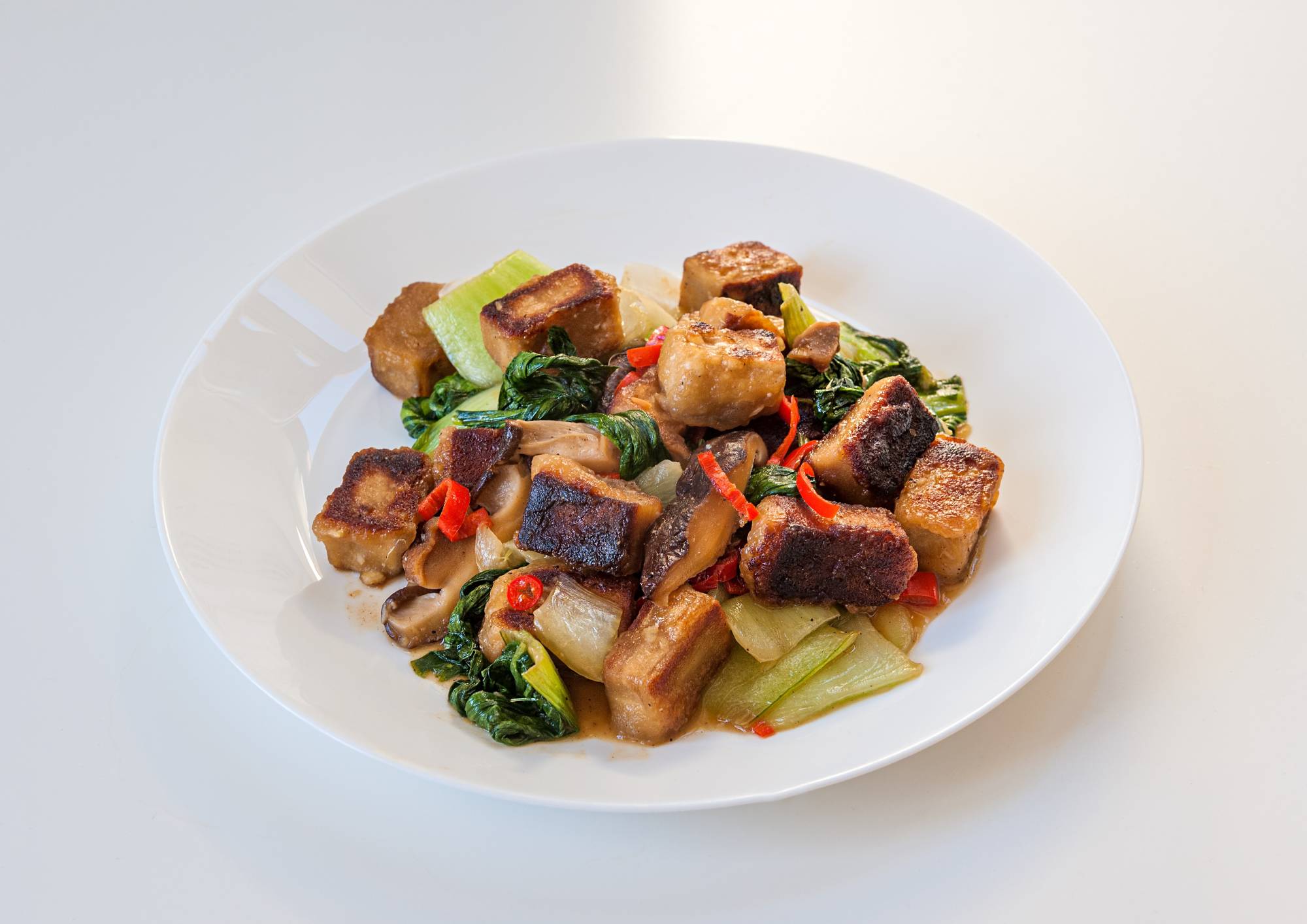The culinary tradition of shōjin ryōri, a vegetarian cuisine that arose due to the dietary restrictions of Zen Buddhist monks, as well as prolonged periods in Japanese history in which eating meat was discouraged or outlawed, has left the country with a variety of vegetable-based dishes that act as sources of protein.
An ingredient in one such dish is Kōya dōfu (freeze-dried tofu also known as kōri dōfu). Dating back to at least the Kamakura Period (1192-1333), Kōya dōfu was traditionally made by slicing firm tofu, placing it in rows on boxes lined with straw and letting it sit outside during freezing temperatures during the winter. The frozen tofu was then hung up out of the sun to dry. Unlike fresh tofu, which goes off very quickly, Kōya dōfu can be kept in a cool, dry place without refrigeration for a considerable amount of time.
As noted above, the Japanese use two terms to refer to freeze-dried tofu. The more common one, Kōya dōfu, comes from the theory that the process was invented by monks on Mount Koya in present-day Wakayama Prefecture. However, there is also evidence that frozen tofu existed in the Shinshu (present-day Nagano Prefecture) and Tohoku regions of the country where it was called shimi dōfu (frozen tofu). The “shi” in “shimi” is written using the same kanji as “kō” in “kōri,” accounting for the other term. If you are interested in learning more about the history of the food, check out Akira Yamashita’s “Kōri dōfu no Rekishi” (“The History of Frozen Tofu”), published in 1962.



















With your current subscription plan you can comment on stories. However, before writing your first comment, please create a display name in the Profile section of your subscriber account page.